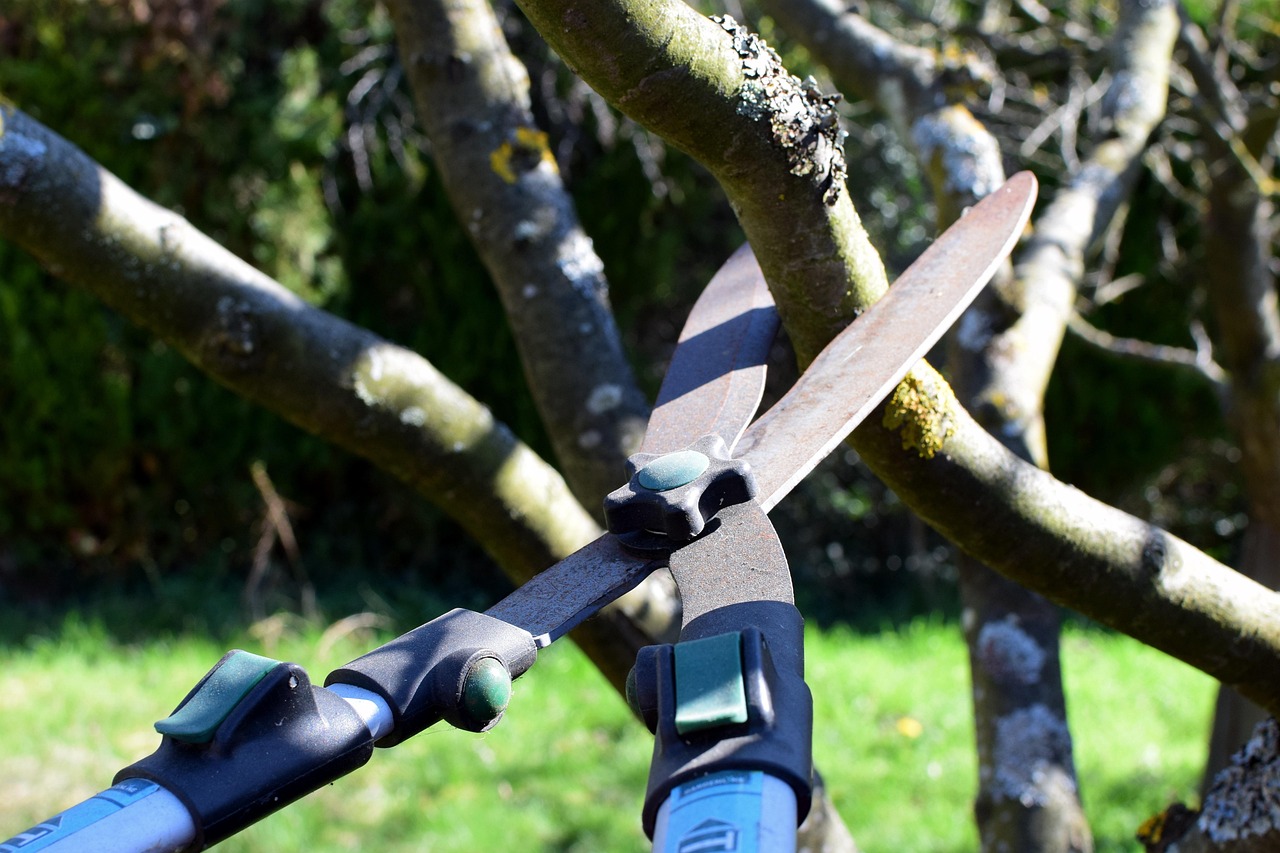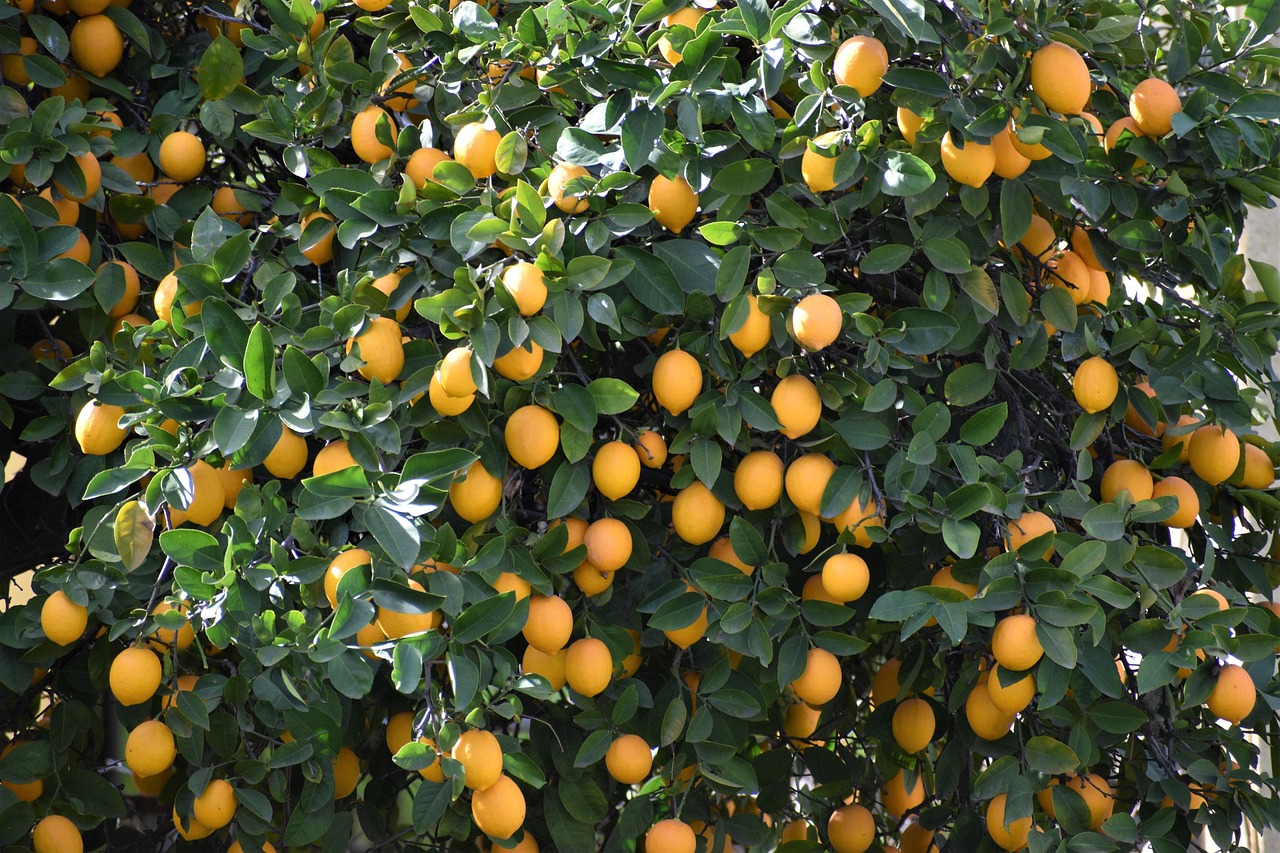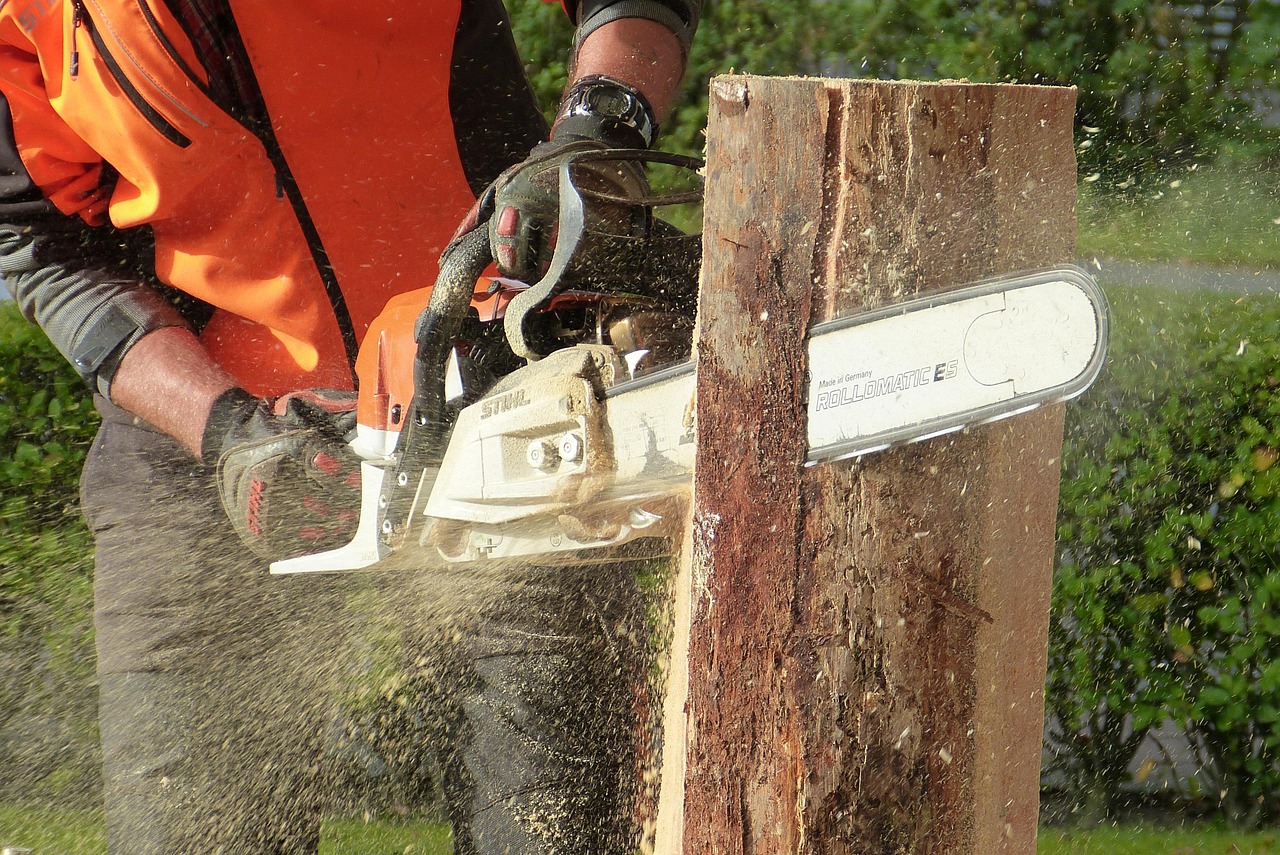Lemon tree pruning mistakes often arise from improper timing, incorrect techniques, or neglecting tree health. To avoid these pitfalls, understand the best practices for pruning, including the right tools and the ideal seasons for trimming your lemon tree.
Lemon trees are a popular choice for home gardeners due to their fragrant blossoms and delicious fruits. However, proper care is essential for maintaining their health and productivity. One critical aspect of lemon tree care is pruning. Pruning helps shape the tree, encourages better air circulation, and promotes fruit production. Yet, many gardeners make common mistakes that can hinder their efforts.

Understanding the basics of lemon tree pruning is crucial. Many enthusiasts tend to prune too heavily or at the wrong time, which can lead to poor growth or even damage to the tree. Recognizing what not to do is as important as knowing the right methods. Below are some key points to consider when it comes to pruning lemon trees:
| Mistake | Description | How to Avoid |
|---|---|---|
| Pruning at the Wrong Time | Cutting branches during winter can stress the tree. | Prune in late winter or early spring before new growth begins. |
| Over-Pruning | Removing too many branches can hinder fruit production. | Focus on light pruning to maintain shape and remove only dead or diseased wood. |
| Using Dull Tools | Dull tools can crush branches and tear bark. | Ensure all pruning tools are sharp and clean before use. |
| Ignoring Tree Health | Pruning unhealthy trees can worsen their condition. | Assess the health of the tree first; prune only if necessary. |
| Not Understanding Growth Patterns | Pruning without knowledge of how lemon trees grow can lead to mistakes. | Learn about the specific growth habits of your lemon tree variety. |
Common Lemon Tree Pruning Mistakes
One of the most common mistakes gardeners make is pruning at the wrong time. Timing is crucial as lemon trees have specific growth cycles. Pruning during the winter months can expose trees to cold damage and stress. It is advisable to prune your lemon tree just before new growth begins, typically in late winter or early spring.
Another frequent error is over-pruning. While it may seem beneficial to remove many branches, this can actually reduce fruit production. Lemon trees require a certain number of leaves to photosynthesize effectively. When you remove too much foliage, you limit their ability to produce energy needed for growth and fruiting.

Using dull tools is another factor that contributes to poor pruning outcomes. Dull shears can cause more damage than good by crushing branches rather than making clean cuts. This can lead to infections and diseases entering the tree through torn bark. Always ensure your tools are sharp and sanitized before you start pruning.
Moreover, ignoring the overall health of the tree can lead to significant issues. If a tree is already struggling with pests or diseases, pruning may worsen its condition. Always assess the health of your lemon tree prior to making any cuts. If you notice signs of disease or stress, consider consulting a professional before proceeding with pruning.
A lack of understanding of how lemon trees grow can also result in poor pruning decisions. Different varieties may have varying growth habits. Familiarize yourself with your specific lemon tree type to ensure you prune correctly. This knowledge allows you to make informed decisions about which branches to trim and when.

In addition to these mistakes, some gardeners fail to recognize the importance of removing dead or diseased wood. Not only does this type of pruning improve the tree’s appearance, but it also prevents potential disease spread. Regularly inspect your lemon tree and remove any unhealthy growth as part of your maintenance routine.
Learning about proper pruning techniques can significantly enhance your gardening experience. By avoiding common mistakes and applying best practices, you will foster a healthy and productive lemon tree in your garden. Understanding when and how to prune is essential for achieving optimal growth and fruit yield.
As you become more familiar with your lemon tree’s needs, you will gain confidence in your pruning skills. The process may seem daunting at first, but with practice and patience, you will develop a successful strategy for maintaining your tree’s health. Over time, your efforts will pay off in the form of vibrant foliage and bountiful harvests.

Understanding the Anatomy of a Lemon Tree
Before diving deeper into the pruning techniques, it is essential to understand the anatomy of a lemon tree. Recognizing the various parts of the tree helps in making informed decisions during the pruning process. The key components of a lemon tree include:
- Branches: These support the leaves and fruit. Healthy branches are vital for the tree’s stability.
- Leaves: The foliage is crucial for photosynthesis. Healthy leaves contribute to the tree’s overall health.
- Flowers: Lemon trees produce fragrant flowers that eventually develop into fruit.
- Fruit: The lemons themselves are the primary product of the tree, requiring proper care to thrive.
- Roots: The root system anchors the tree and absorbs water and nutrients from the soil.
Each part of the lemon tree plays a role in its growth and productivity. Understanding these components can help guide your pruning strategy, ensuring that you do not remove essential parts that contribute to the tree’s health.
Best Practices for Pruning Lemon Trees
To achieve optimal results when pruning your lemon tree, follow these best practices:
- Use Clean and Sharp Tools: Always start by cleaning your pruning tools with rubbing alcohol or a bleach solution. Sharp tools make precise cuts, which minimizes damage to the tree.
- Know Your Tree’s Growth Habit: Different varieties of lemon trees have varying growth patterns. Research your specific type to tailor your pruning approach effectively.
- Prune for Airflow: Focus on removing branches that cross over each other or grow inward. This encourages airflow and reduces the risk of disease.
- Focus on Structure: Aim to create a well-balanced structure. Remove weak branches and thin out overcrowded areas to promote a strong framework.
- Remove Suckers: Suckers are small shoots that grow from the base of the trunk or roots. Regularly remove them as they divert energy from fruit production.
The Right Timing for Pruning
The timing of pruning is critical for maintaining a healthy lemon tree. Here are some guidelines to consider:
- Late Winter to Early Spring: This is generally the best time to prune lemon trees as they are still dormant but about to enter their active growth phase.
- Avoid Pruning During Fruit Set: Do not prune while the tree is setting fruit, as this can lead to reduced yield.
- Post-Harvest Pruning: After harvesting your lemons, consider performing light pruning to shape the tree and promote new growth.
Common Tools for Pruning Lemon Trees
The right tools can make a significant difference in your pruning efforts. Here are some essential tools for pruning lemon trees:
| Tool | Description | Use |
|---|---|---|
| Hand Pruners | Small, handheld scissors for cutting small branches. | Ideal for precise cuts on thin branches up to ¾ inch thick. |
| Loppers | Larger cutting tools with long handles for leverage. | Used for cutting thicker branches, typically between ¾ inch and 1½ inches thick. |
| Saw | A small pruning saw for larger branches. | Useful for cutting branches thicker than 1½ inches. |
| Pole Pruner | A tool attached to a long pole for reaching high branches. | Allows you to trim high branches without using a ladder. |
| Gloves | A protective covering for your hands. | Protects your hands from thorns and sharp tools during pruning. |
Avoiding Common Pitfalls in Pruning Techniques
While understanding the basics is important, avoiding common pitfalls is equally crucial. Here are several mistakes to watch out for:
- Leaving Stubs: When making cuts, avoid leaving stubs as they create entry points for diseases.
- Cuts at Wrong Angles: Make sure cuts are at an angle to encourage proper healing and drainage of water.
- Pushing Growth Too Much: Pruning should not be overly aggressive. A gentle approach encourages healthy growth without shocking the tree.
- Losing Sight of Goals: Keep in mind the primary goals of pruning, which are promoting health, improving airflow, and increasing fruit production.
By adhering to these best practices and avoiding common pitfalls, you can ensure that your lemon tree remains healthy and productive. As you gain experience in pruning, you will develop a deeper understanding of how your actions affect the tree’s growth and fruiting capabilities. Continuously learning and adapting your techniques will lead to more successful gardening experiences with your lemon tree.
Signs of a Healthy Lemon Tree
Recognizing the signs of a healthy lemon tree is essential for effective pruning and overall care. A healthy tree will not only yield more fruit but will also be more resilient to pests and diseases. Here are some key indicators of a thriving lemon tree:
- Vibrant Foliage: Healthy leaves should be bright green and free from yellowing or browning.
- Strong Branches: The branches should be sturdy and not show signs of weakness or brittleness.
- Consistent Flowering: A healthy tree will produce a good number of flowers each season, indicating that it is ready to bear fruit.
- Fruit Development: Look for consistent fruit growth without premature dropping. Healthy trees should maintain their lemons until they are ripe.
- Robust Root System: Healthy roots are vital for nutrient absorption. While not visible, you can assess root health by the overall vigor of the tree.
Pest and Disease Management
Pests and diseases can significantly affect the health of your lemon tree. Recognizing early signs of trouble can help you take action before it’s too late. Here are some common issues to watch for:
- Scale Insects: These small pests can appear as bumps on branches and leaves, sucking sap from the tree.
- Aphids: Often found on new growth, aphids can cause leaves to curl and distort.
- Leaf Spot: Brown spots on leaves may indicate fungal infections that require treatment.
- Root Rot: Caused by overwatering, this condition leads to yellowing leaves and mushy roots.
To manage these issues, consider the following methods:
- Cultural Control: Maintain proper watering practices and ensure good airflow by pruning appropriately.
- Natural Predators: Introduce beneficial insects like ladybugs to help control aphid populations.
- Organic Treatments: Use insecticidal soap or neem oil as safe options for treating infestations.
- Regular Inspections: Check your tree frequently for early signs of pests or disease. Quick action can prevent larger problems.
Seasonal Care for Lemon Trees
Caring for your lemon tree involves understanding its needs throughout the seasons. Each season brings specific tasks that can benefit your tree’s health and productivity:
Spring Care
Spring is the time when lemon trees begin to wake from dormancy. This is crucial for growth and fruit production:
- Pruning: Light pruning should be done to remove any dead or crossing branches, promoting a healthy structure.
- Fertilization: Apply a balanced fertilizer to support new growth. Look for fertilizers high in nitrogen, phosphorus, and potassium.
- Pest Monitoring: Keep an eye out for pests as the weather warms up. Early detection is key to preventing infestations.
Summer Care
During the summer months, your lemon tree will be in full growth mode. Regular care is essential during this period:
- Irrigation: Ensure consistent watering, especially during dry spells. Lemon trees prefer deep watering to encourage strong root systems.
- Mulching: Apply organic mulch around the base of the tree to retain moisture and suppress weeds.
- Pest Control: Continue monitoring for pests and diseases. Take action promptly if issues arise.
Fall Care
As temperatures begin to drop, prepare your lemon tree for the upcoming winter:
- Final Pruning: Conduct any necessary pruning before winter sets in to minimize stress on the tree.
- Watering Adjustments: Reduce watering frequency as the tree’s growth slows down, but ensure the soil does not completely dry out.
- Pest Inspection: Check for any lingering pests before winter. Treat as necessary to prevent them from overwintering on your tree.
Winter Care
Winter poses unique challenges for lemon trees, especially in colder climates. Take these steps to protect your tree:
- Protection from Frost: If you live in a cold area, consider wrapping your tree or moving potted lemon trees indoors during extreme cold.
- No Pruning Required: Avoid pruning in winter as this can expose the tree to cold damage.
- Minimal Watering: Water sparingly during winter months as the tree requires less moisture while dormant.
By staying attentive to your lemon tree’s seasonal needs, you can ensure its health and productivity throughout the year. Understanding these care requirements will lead to better outcomes when it comes time for pruning, resulting in a flourishing lemon tree that yields abundant fruit.
Advanced Techniques for Pruning Lemon Trees
Once you have mastered the basics of lemon tree pruning and care, you may want to explore advanced techniques that can further enhance the health and productivity of your tree. These techniques often require a deeper understanding of plant behavior and growth patterns.
Training and Shaping
Training and shaping your lemon tree can lead to a more aesthetically pleasing form as well as improved fruit production. Here are some effective methods:
- Crown Thinning: This involves selectively removing branches to allow sunlight to penetrate the center of the tree. Thinning helps improve air circulation and reduces the risk of disease.
- Espalier: For those with limited space, consider training your lemon tree against a wall or trellis. This method creates a two-dimensional form that can be both functional and ornamental.
- Topiary: Some gardeners enjoy shaping their trees into specific forms. While this requires patience and skill, it can create unique visual interest in your garden.
Grafting Techniques
If you are interested in propagating lemon trees or enhancing certain traits, grafting can be an effective method. Grafting involves joining two plants together so they grow as one. This technique can help you create a hybrid tree that may bear different varieties of lemons on one rootstock.
Here are some key points to consider when grafting:
- Select Compatible Varieties: Ensure that the scion (the part you want to graft) and the rootstock (the base plant) are compatible for successful grafting.
- Timing is Key: Grafting is best done in early spring when both plants are actively growing.
- Proper Techniques: Learn different grafting methods such as cleft grafting or whip-and-tongue grafting to find what works best for your needs.
Fertilization Strategies for Lemon Trees
Proper fertilization is crucial for the overall health and productivity of your lemon tree. Understanding when and how to fertilize can make a significant difference in fruit yield.
Types of Fertilizers
Selecting the right type of fertilizer is essential for providing balanced nutrition to your lemon tree:
- Granular Fertilizers: These slow-release options provide nutrients over time. They are easy to apply and generally require less frequent application.
- Liquid Fertilizers: These fast-acting fertilizers are great for providing immediate nutrients. They can be applied more often, especially during the growing season.
- Organic Options: Consider using compost or well-rotted manure. These not only provide nutrients but also improve soil structure and microbial activity.
Fertilization Schedule
A proper fertilization schedule can optimize growth and fruit production:
- Early Spring: Apply a balanced fertilizer just as new growth begins to kickstart the season.
- Mid-Season: Follow up with another application in mid-summer to support ongoing growth and fruit development.
- Fall Application: A light feeding in early fall can help prepare the tree for winter dormancy.
Pest and Disease Prevention Practices
In addition to regular inspections and treatments, implementing preventive measures can help minimize pest and disease issues:
- Cultural Practices: Rotate crops if planting other citrus trees nearby, and ensure proper spacing between plants to improve airflow.
- Soil Health: Maintain healthy soil through mulching, composting, and avoiding over-fertilization to foster beneficial microorganisms that combat pests.
- Use Companion Plants: Certain plants can deter pests. Consider planting marigolds or basil near your lemon tree to naturally repel harmful insects.
Conclusion
Pruning lemon trees is both an art and a science. By understanding the anatomy of your tree, recognizing signs of health, and employing proper techniques, you can avoid common pitfalls that hinder growth. Regular care throughout the seasons ensures that your lemon tree remains robust and productive.
The knowledge gained from this article equips you with the tools necessary to care for your lemon tree effectively. From timing your pruning to selecting appropriate tools, every step contributes to the overall health of your tree. With patience and practice, you will reap the rewards of lush foliage and bountiful harvests.
Remember, consistent learning and adapting your approach based on your observations will lead to better outcomes in your gardening journey. Whether you are a novice or an experienced gardener, understanding these principles will help you cultivate a thriving lemon tree that brings joy and delicious fruit for years to come.
